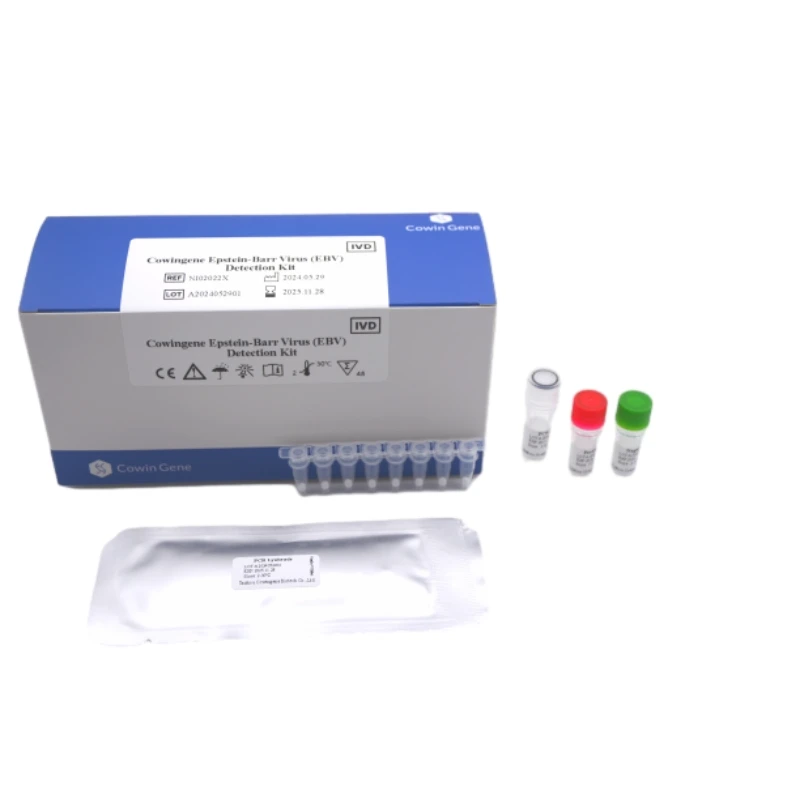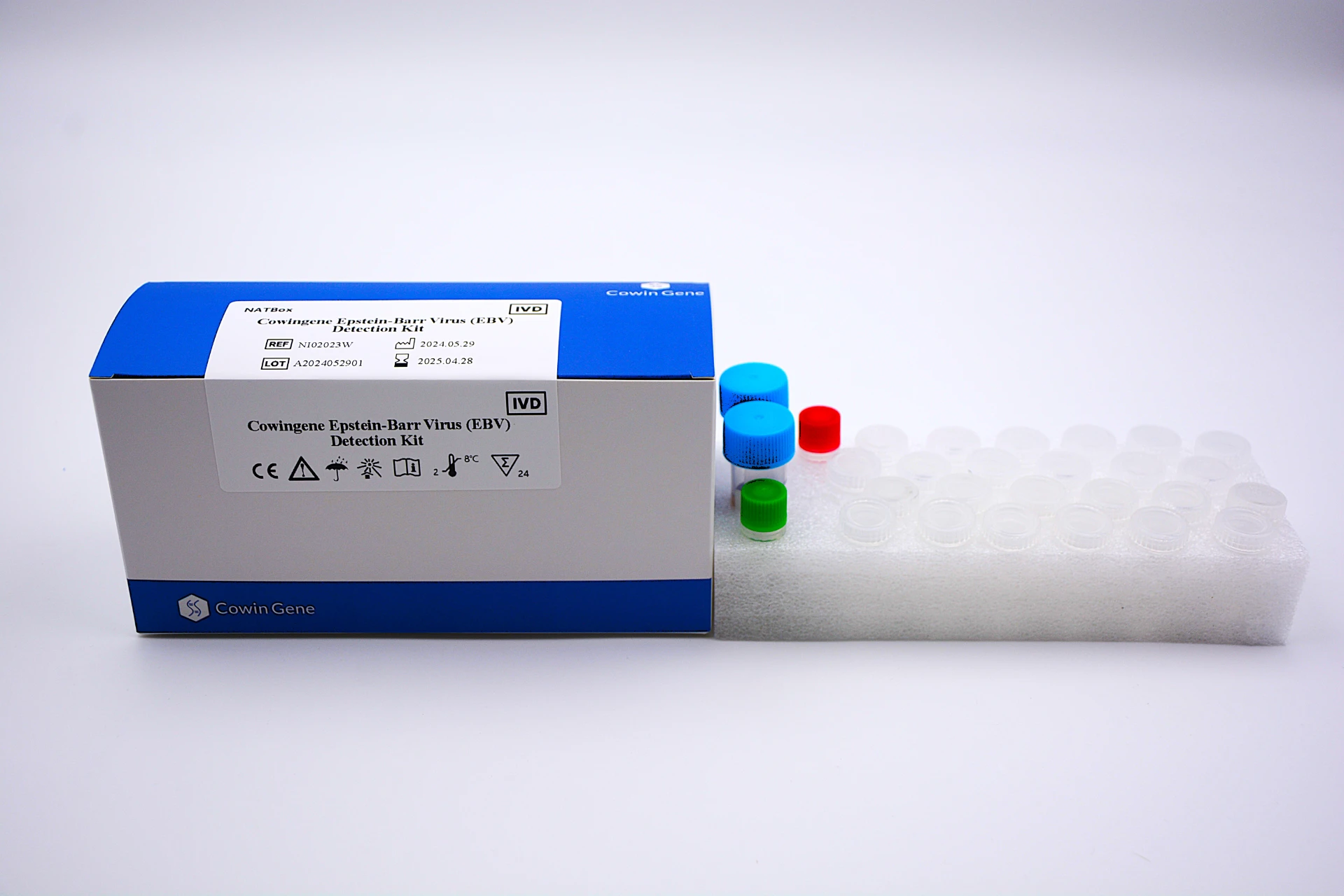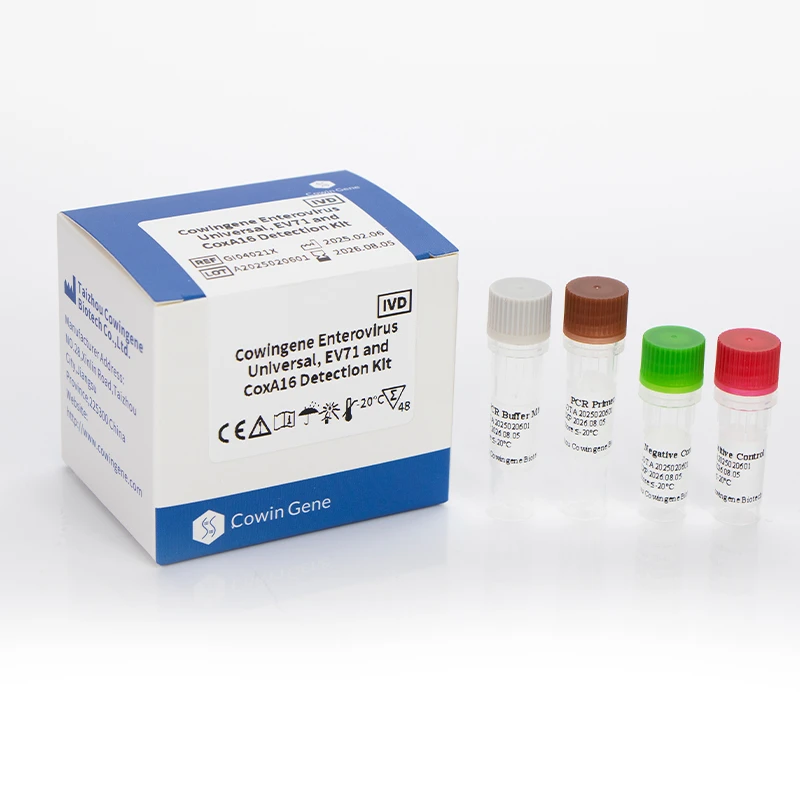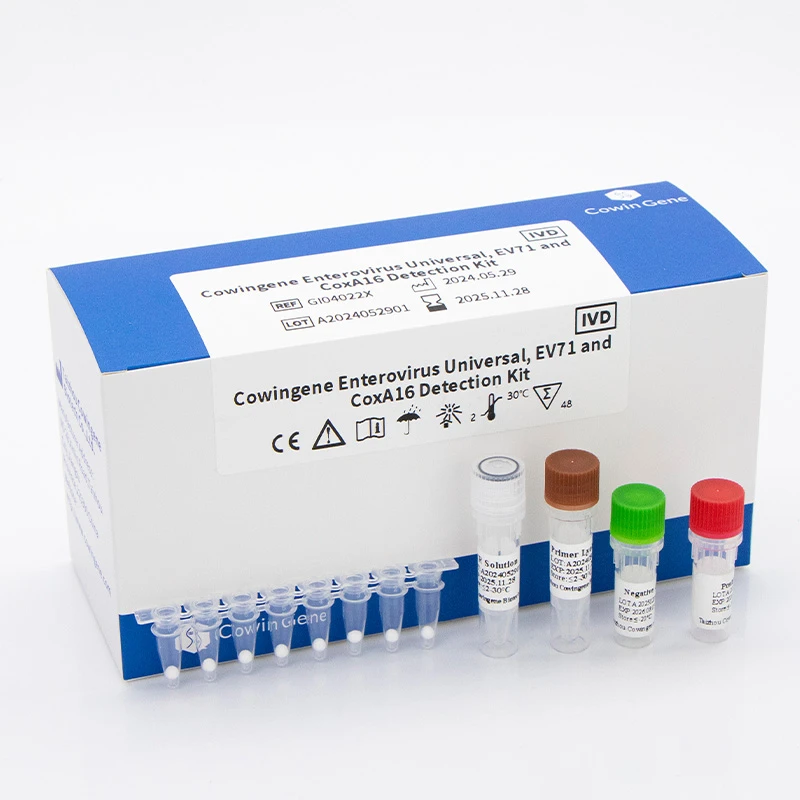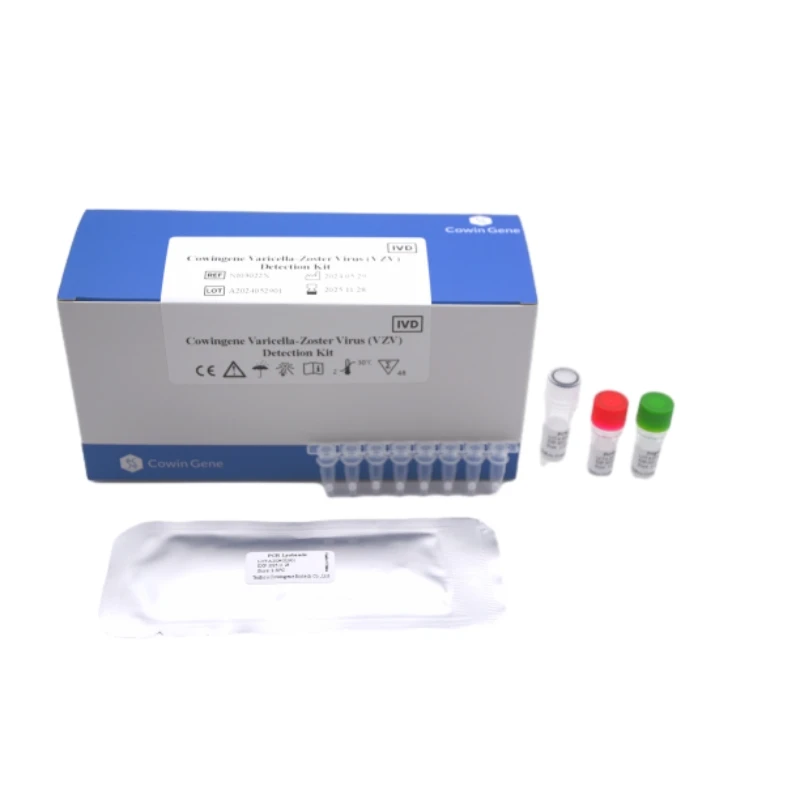Sep . 22, 2025 12:05 Back to list
Chlamydia trachomatis Detection: Accurate PCR Testing
Advanced Solutions for detection chlamydia trachomatis in B2B Diagnostics
In the realm of B2B diagnostics, accurate and efficient solutions for the detection chlamydia trachomatis are paramount. Chlamydia trachomatis remains one of the most prevalent bacterial sexually transmitted infections (STIs) globally, posing significant public health challenges due to its often asymptomatic nature and potential for severe long-term complications, including infertility, ectopic pregnancy, and chronic pelvic pain. For diagnostic laboratories, public health initiatives, and research institutions, robust and reliable testing methodologies are indispensable for effective surveillance, diagnosis, and management.
This article delves into the sophisticated technologies and industry best practices driving the molecular detection chlamydia trachomatis, focusing on the technical specifications, application advantages, and comprehensive solutions available to meet the stringent demands of modern healthcare and research. We will explore the intricate process flow, key industry trends, and the strategic advantages offered by advanced diagnostic platforms, including comprehensive vendor comparisons and customized solutions tailored for specific operational needs.
Process Flow for Molecular Detection of Chlamydia trachomatis
The molecular detection chlamydia trachomatis primarily relies on nucleic acid amplification tests (NAATs), with Polymerase Chain Reaction (PCR) being the gold standard. This process involves several critical stages, each optimized for sensitivity, specificity, and throughput.
1. Sample Collection & Transport
Appropriate sample collection is foundational. Specimens typically include urine, vaginal swabs, endocervical swabs, rectal swabs, or pharyngeal swabs. The collection kits are designed to stabilize nucleic acids and prevent degradation, ensuring sample integrity during transport to the laboratory. These materials adhere to ISO 13485 standards for medical devices.
2. Nucleic Acid Extraction
This critical step involves lysing bacterial cells and purifying genomic DNA from the sample matrix. Automated extraction platforms employing magnetic bead-based separation or silica column-based methods are commonly used, ensuring high yields of pure DNA while minimizing human error and cross-contamination. This process is crucial for effective trachomatis pcr.
3. PCR Amplification
Extracted DNA serves as the template for PCR. Specific primers targeting highly conserved genes unique to Chlamydia trachomatis (e.g., cryptic plasmid, OmpA gene) are used to amplify target sequences exponentially. Real-time PCR (qPCR) systems allow for simultaneous amplification and detection, quantifying the target DNA in real-time. This is the core of pcr c trachomatis methodologies.
4. Detection & Interpretation
During qPCR, fluorescent probes bind to the amplified target sequences, emitting a signal proportional to the amount of DNA present. Software analyzes the fluorescence curves to determine positivity and quantify viral load. Internal controls are always included to monitor the entire process, from extraction efficiency to PCR inhibition, ensuring reliable results.
5. Quality Control & Reporting
Rigorous quality control measures, including positive and negative controls, are applied to every run. Results are reviewed by trained personnel before being reported, often through Laboratory Information Management Systems (LIMS). Testing standards typically align with national guidelines (e.g., CDC) and international quality management systems like ISO 15189.
The typical service life of such diagnostic kits (reagents, consumables) is optimized for stability and performance under specified storage conditions, usually 12-24 months from the manufacturing date, with rigorous validation according to standards like CLSI.
Target Industries: This process is crucial for clinical diagnostic laboratories, public health surveillance centers, sexual health clinics, research institutions, and pharmaceutical companies engaged in STI research and drug development.
Advantages in Typical Application Scenarios: The molecular approach offers superior sensitivity and specificity compared to older methods like culture or enzyme immunoassays. It allows for early detection, even in asymptomatic cases, significantly reducing transmission rates and preventing severe long-term complications. Its high-throughput capability supports large-scale screening programs, enhancing public health outcomes.
Industry Trends in Chlamydia Diagnostics
The landscape for detection chlamydia trachomatis is constantly evolving, driven by technological advancements and public health imperatives. Key trends include:
- Automation and High Throughput: Labs are increasingly adopting fully automated systems that integrate sample processing, nucleic acid extraction, amplification, and result interpretation, minimizing hands-on time and maximizing sample processing capacity.
- Point-of-Care (POC) Testing: There's a growing demand for rapid, accurate POC tests that can provide results within minutes at the clinic, facilitating immediate treatment decisions and improving patient follow-up.
- Multiplexing Capabilities: Modern assays often combine the detection chlamydia trachomatis with other common STIs (e.g., Neisseria gonorrhoeae, Mycoplasma genitalium, Trichomoniasis) in a single test, streamlining workflows and reducing costs.
- Digital Integration: Seamless integration with LIMS and electronic health records (EHR) is crucial for efficient data management, reporting, and epidemiological surveillance.
- Lyophilized Reagents: Kits featuring lyophilized reagents reduce cold chain requirements, simplify logistics, and increase shelf stability, particularly beneficial for global health initiatives and remote clinics.
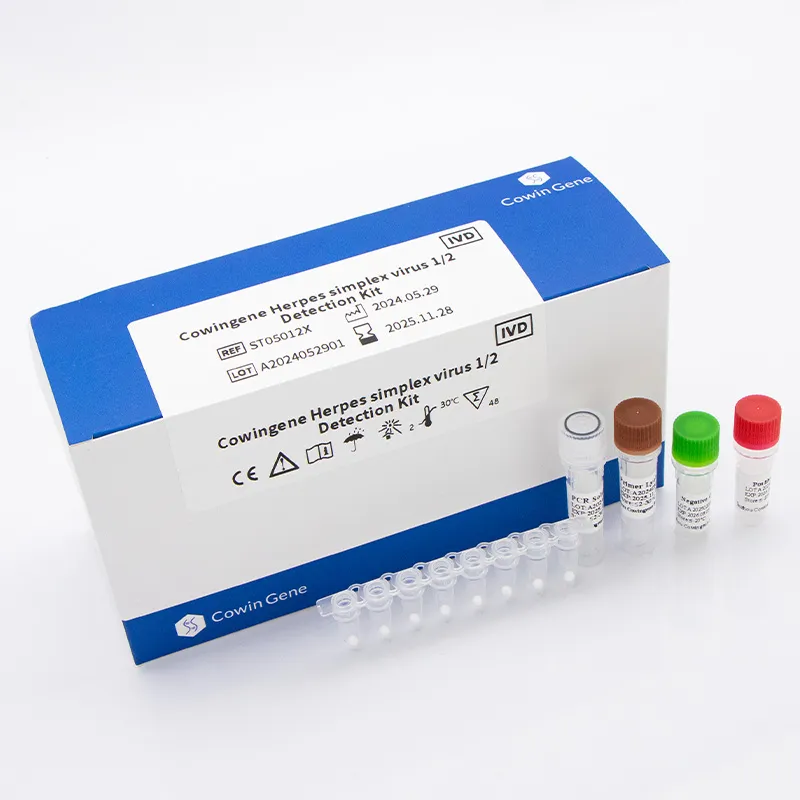
Technical Specifications and Parameters for Chlamydia Detection Kits
High-quality pcr c trachomatis kits are defined by stringent technical specifications that guarantee performance. Below is a representative table of key parameters for molecular diagnostic kits:
Technical Advantages and Applications
Advanced solutions for trachomatis pcr offer significant advantages:
- Unparalleled Accuracy: Molecular methods boast superior sensitivity and specificity over traditional culture or serology, minimizing false negatives and positives.
- Early Detection: NAATs can detect the pathogen at very low concentrations, allowing for diagnosis during the early stages of infection, often before symptom onset. This is critical for preventing onward transmission.
- Versatile Sample Types: The ability to use non-invasive samples like urine or self-collected vaginal swabs enhances patient comfort and increases screening uptake.
- High Throughput: Automated platforms enable laboratories to process hundreds to thousands of samples per day, crucial for large-scale public health screening programs and managing high patient volumes.
- Robustness and Reproducibility: Standardized protocols and quality-controlled reagents ensure consistent and reliable results across different laboratories and operators.
Application Scenarios:
- Routine Clinical Diagnostics: For symptomatic patients presenting with suspected STI, including follow-up for treatment efficacy.
- Asymptomatic Screening Programs: Essential for targeting high-risk populations (e.g., sexually active young adults, pregnant women) to reduce the burden of untreated infections.
- Public Health Surveillance: Monitoring prevalence rates and identifying outbreak clusters to inform public health interventions.
- Research & Development: Investigating epidemiology, antibiotic resistance patterns, and developing new diagnostic or therapeutic strategies.
Vendor Comparison: Key Differentiators in Chlamydia trachomatis Detection Kits
Choosing the right diagnostic partner for pcr c trachomatis solutions requires careful consideration of various factors beyond just technical specifications. Below is a conceptual comparison reflecting common differentiators among leading providers:
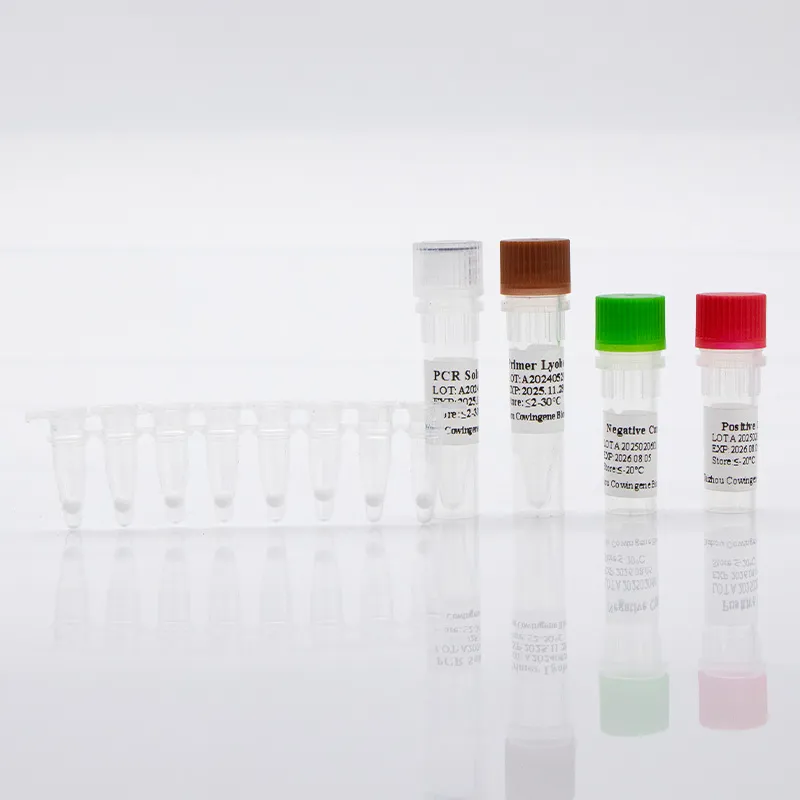
Customized Solutions for Diverse Needs
Understanding that a one-size-fits-all approach is insufficient for the complex landscape of clinical diagnostics, leading providers offer tailored solutions for detection chlamydia trachomatis.
For High-Throughput Laboratories: Automated systems integrated with robotics and LIMS ensure seamless processing of thousands of samples daily, optimized for cost-efficiency and reduced labor. Solutions include bulk reagent formats and dedicated instrument support.
For Small to Medium Labs and Clinics: Compact, user-friendly benchtop systems with pre-filled cartridges or lyophilized reagents simplify operations, requiring minimal technical expertise and reducing setup time. These are ideal for facilities requiring quick turnaround without extensive infrastructure.
For Public Health Programs: Robust, stable assays suitable for challenging environments, potentially with minimal cold chain requirements, are crucial. Our partners benefit from kits designed for ease of use in diverse settings, supported by comprehensive training and implementation assistance.
Application Case Study: Regional STI Screening Initiative
A large regional public health laboratory serving a population of 2 million faced increasing rates of Chlamydia trachomatis infections, particularly among young adults. Their existing ELISA-based screening methods suffered from lower sensitivity and required confirmatory testing, leading to delays in diagnosis and treatment.
Challenge: Improve screening efficiency, reduce turnaround time, increase diagnostic accuracy, and expand screening accessibility for detection chlamydia trachomatis.
Solution: The laboratory implemented a fully automated molecular diagnostic platform utilizing a lyophilized trachomatis pcr kit. This system allowed for high-throughput processing of self-collected urine and vaginal swab samples. The lyophilized format simplified logistics, eliminating the need for strict cold chain during transport to peripheral collection sites.
Outcome:
- Diagnostic Accuracy: Clinical sensitivity increased to over 98%, leading to a 15% increase in detected cases compared to previous methods, primarily identifying asymptomatic infections.
- Turnaround Time: Average sample-to-result time decreased from 3-5 days to less than 24 hours, facilitating faster patient notification and treatment.
- Operational Efficiency: Automation reduced labor costs by 30% and significantly minimized human error.
- Cost Savings: Despite the initial investment, the long-term cost savings from reduced confirmatory testing, increased throughput, and improved public health outcomes (reduced transmission) provided a strong ROI.
Customer Feedback: "The transition to the automated molecular platform for detection chlamydia trachomatis has been transformative. Our ability to rapidly and accurately diagnose infections, especially in asymptomatic individuals, has dramatically improved our public health response and patient care. The lyophilized reagents have also simplified our supply chain, a critical factor for our widespread screening initiatives." - Dr. Anya Sharma, Director of Regional Public Health Laboratory.
FAQs on Chlamydia trachomatis Detection
Q: What makes molecular detection superior to other methods for Chlamydia trachomatis?
A: Molecular detection (NAATs/PCR) offers significantly higher sensitivity and specificity, allowing for detection of very low bacterial loads and providing more accurate results, especially in asymptomatic individuals, compared to culture or antigen tests.
Q: Can your kits detect all major serovars of Chlamydia trachomatis?
A: Yes, our kits are designed with primers and probes targeting conserved regions (e.g., cryptic plasmid, OmpA gene) common to all clinically relevant serovars of Chlamydia trachomatis, ensuring broad detection capability.
Q: What is the typical lead time for ordering and fulfillment?
A: Standard orders typically have a lead time of 2-4 weeks, depending on volume and customization requirements. Expedited shipping options are available for urgent needs. Our global distribution network ensures efficient delivery.
Q: What warranty and customer support do you offer?
A: All our diagnostic kits come with a standard 12-month warranty from the date of shipment, ensuring product integrity and performance. We offer comprehensive technical support, including online resources, dedicated customer service, and on-site training and installation services by certified engineers.
Authoritative References and Certifications
Our commitment to excellence in detection chlamydia trachomatis is underscored by adherence to stringent international standards and strong partnerships:
- Certifications: All our manufacturing processes and products are certified under ISO 13485 (Medical Devices Quality Management System) and CE-IVD marked, ensuring compliance with European directives for in vitro diagnostic medical devices. Certain products also hold FDA approval in specific markets.
- Partners & Experience: With over 15 years of experience in molecular diagnostics, we collaborate with leading academic institutions and public health organizations globally. Our expertise in developing cutting-edge diagnostic solutions is recognized by a growing network of partner laboratories and healthcare providers.
- Quality Assurance: Each batch of reagents undergoes rigorous quality control testing, including sensitivity, specificity, and reproducibility assays, before release. These tests conform to CLSI (Clinical and Laboratory Standards Institute) guidelines.
References
- World Health Organization. Global health sector strategy on sexually transmitted infections 2016–2021. Towards ending STIs. 2016.
- Centers for Disease Control and Prevention. Sexually Transmitted Infections Treatment Guidelines. 2021.
- Clinical and Laboratory Standards Institute. Nucleic Acid Amplification Assays for Detection of Chlamydia trachomatis and Neisseria gonorrhoeae; Approved Guideline. 2019.
- European Centre for Disease Prevention and Control. Chlamydia trachomatis infections. Annual Epidemiological Report for 2019. 2021.
Related PRODUCTS
-
Understanding Monkeypox Testing PCR – Global Health & Diagnostic Insights
NewsNov.24,2025 -
Comprehensive Guide to Monkey Pox Detection: Methods, Applications & Innovations
NewsNov.23,2025 -
Essential Guide to Monkeypox Detection: Technologies, Applications & Future Trends
NewsNov.23,2025 -
Understanding Strep B Test Cost: Global Insights and Healthcare Impact
NewsNov.22,2025 -
Group B Strep DNA Test – Fast, Accurate Screening to Prevent Neonatal Infection
NewsNov.21,2025 -
Essential Guide to Group B Strep Test Kits: Benefits, Uses & Innovations
NewsNov.20,2025


